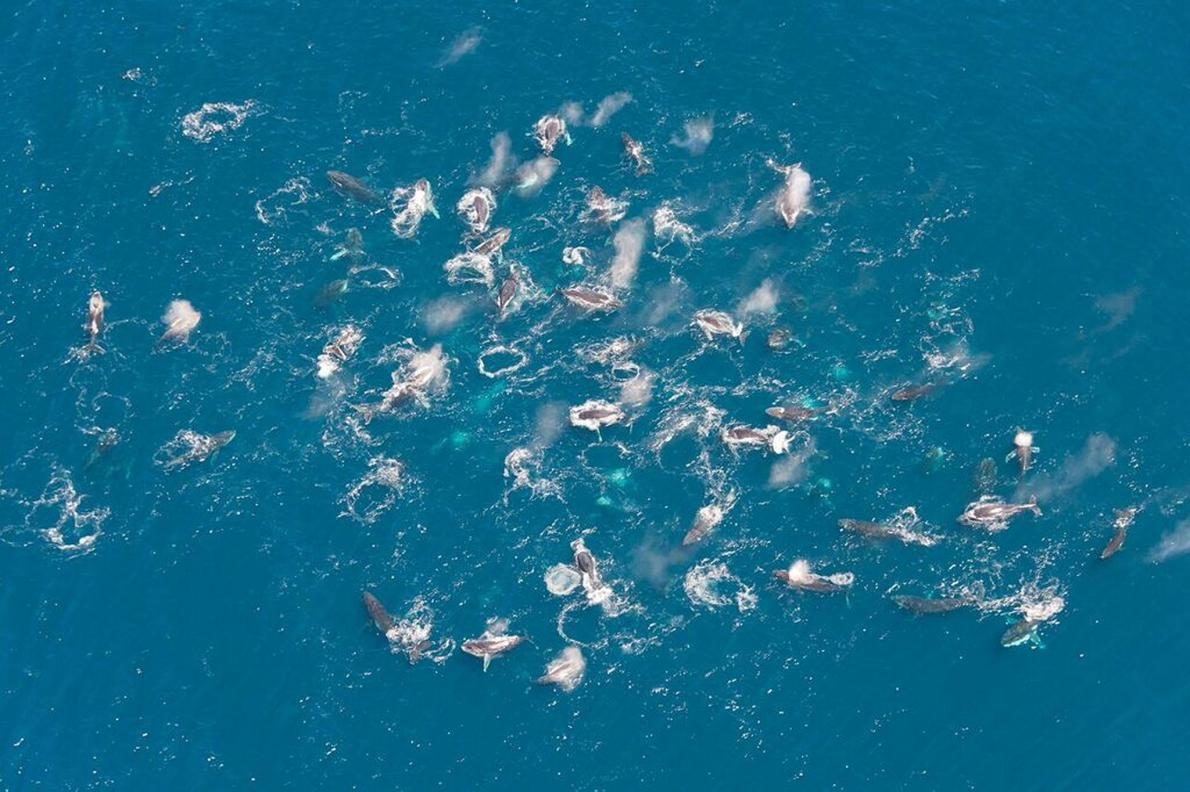
Why are all of these humpback whales all suddenly hanging out? No one really knows.
In a new study, scientists report spotting as many as 200 humpbacks at a time gathering off South Africa. That's bizarre for a species previously believed to be loners.
It's "unlike anything I have seen in working with humpback whales across the Southern Hemisphere," says study leader Ken Findlay, a marine biologist at Cape Peninsula University of Technology in Cape Town, South Africa.
"These are animals that normally are in groups of up to maybe three of four. To see 200 together in an area the size of a football field is remarkable."
Findlay and colleagues observed the tight-knit clusters during three research cruises in the spring of 2011, 2014, and 2015.
The timing and location of these "super groups" is even more perplexing, since humpbacks usually only visit the colder waters of South Africa during the winter months, where they migrate to feed on shrimp, plankton, and small fish.
There are multiple populations of humpback whales worldwide, and Southern Hemisphere whales are known to undertake an annual migration that takes them from prey-rich polar waters to warmer, tropical waters near the Equator for calving and raising their young.
WHALE OF A MYSTERY
Though the team doesn't know why the animals are congregating off South Africa, they have some theories.
For one, they observed the marine mammals hunting—diving and lunging in the water for prey. Perhaps the animals decided to stay in southern waters to feed, instead of migrating north, according to the study, published recently in the journal PLOS ONE.
"Either the availability of prey has changed or the behavior of the whales has changed," Findlay says.
Another theory: The species is booming, and scientists are noticing normal behavior that wasn't previously seen due to low numbers.
It's possible the "behavior was always there, but its only being seen as the population makes remarkable recovery from the pressure of whaling last century," Findlay says.
Commercial whaling in the 19th and early 20th centuries reduced humpback whale populations by nearly 90 percent. At one time, fewer than 2,000 individuals likely remained on Earth.
The International Whaling Commission officially banned whaling in 1966, and the Endangered Species Act protected humpback whales in 1973. Today, with as many as 60,000 animals, the International Union for Conservation of Nature considers the species of low concern, and their populations continue to grow.
Whatever the reason, Findlay and colleagues plan to continue studying these mysterious swarms and why they're forming.



Well, if that's the case, I'd be wary about something about to happen (e.g., a meterorite strike on exact opposite part of globe, North Atlantic, etc.) (If so, MSM (1) won't notice the correlation; and (2) if they do, they won't report it.)
Eyes open!
R.C.
*For an example, read about the ship's cat in Conrad's 'N-word of the Narcissus.' (Free online.) (Great novel!)
RC